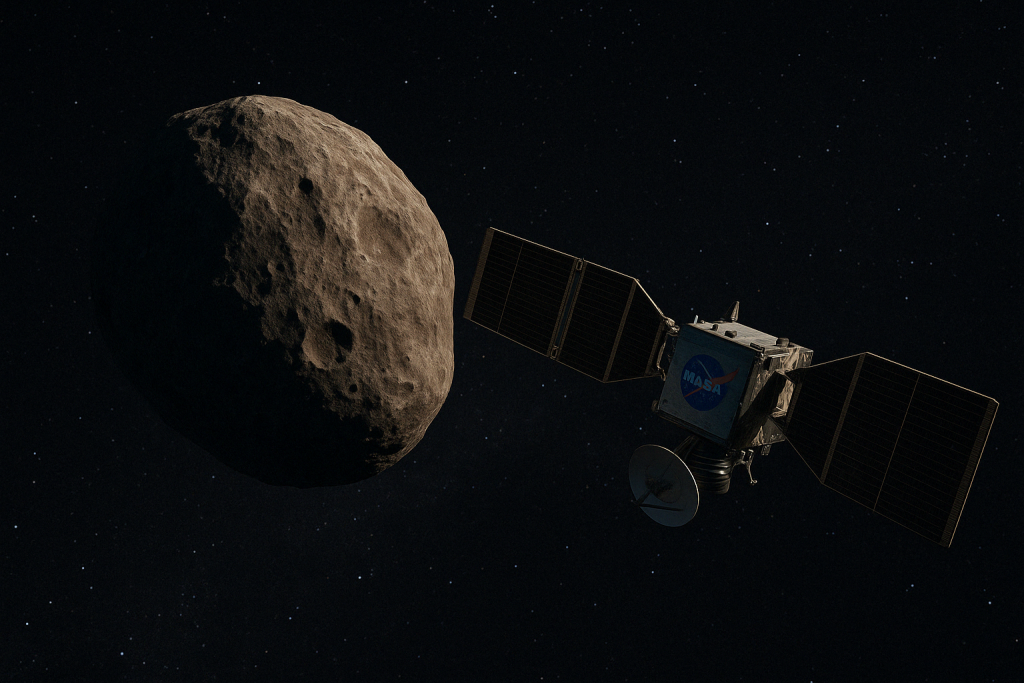NASA’s Lucy Spacecraft to Make High-Speed Flyby of Asteroid Donaldjohanson at 30,000 MPH
NASA’s Lucy spacecraft is set for a high-velocity encounter with the asteroid Donaldjohanson on Sunday, April 20, marking a critical waypoint in its 12-year, 4-billion-mile journey through the solar system. Traveling at a blistering 30,000 miles per hour (48,000 kilometers per hour), Lucy will perform a close flyby of the 4-kilometer-wide asteroid, coming within just 596 miles (960 kilometers) of its surface.

A Milestone in Lucy’s Interplanetary Odyssey
Launched in October 2021, Lucy’s mission is the first dedicated to exploring Jupiter’s Trojan asteroids, two swarms of primitive space rocks that share Jupiter’s orbit and are thought to be remnants of the solar system’s formative years. But before reaching those distant targets, Lucy is conducting preparatory flybys of main-belt asteroids, including Donaldjohanson, which orbits between Mars and Jupiter.
The asteroid is named after paleoanthropologist Donald Johanson, the discoverer of the famous 3.2-million-year-old hominin fossil “Lucy,” after which NASA’s spacecraft is also named. Donaldjohanson is relatively young in geological terms, believed to be a fragment from a collision that occurred about 150 million years ago. This makes it one of the youngest main belt asteroids to be examined by a spacecraft.
Precision Flyby at Extreme Speed
The spacecraft’s flyby of Donaldjohanson will take place at 1:51 PM EDT. Traveling at 13.4 kilometers per second relative to the asteroid, Lucy will cover the asteroid’s entire 2.5-mile diameter in mere fractions of a second. Due to this rapid pace, the operation demands meticulous precision.
Roughly 30 minutes before closest approach, Lucy will initiate automated tracking of the asteroid. Its Long Range Reconnaissance Imager (L’LORRI) will begin capturing high-resolution images. At about 900 kilometers out, the spacecraft will execute a rapid pivot to shield its sensitive instruments from solar glare, a crucial maneuver given its proximity to the sun during the approach.
Since radio signals take around 12 minutes to travel from Earth to Lucy, all imaging and maneuvering must be performed autonomously. Following the encounter, the spacecraft will perform a pitchback maneuver to reorient its high-gain antenna toward Earth. The first images from the flyby are expected to arrive approximately two hours later.
Prelude to the Trojans
While Donaldjohanson provides an important rehearsal, the main event lies ahead: Lucy’s tour of the Trojan asteroids. These bodies, clustered in two gravitationally stable regions ahead of and behind Jupiter (known as the L4 and L5 Lagrange points), have never been visited by any spacecraft.
After completing this flyby, Lucy will use gravitational assists to slingshot toward the Trojans. Its first destination is Eurybates, alongside its small moon Queta, in 2027. The spacecraft will then proceed to Polymele, Leucus, and Orus, all located in the L4 “Greek camp,” culminating in a visit to the L5 “Trojan camp” where it will observe the binary pair Patroclus and Menoetius in 2033.
Scientists hope the mission will answer long-standing questions about the solar system’s early history. One key mystery is whether the Trojans formed in their current orbits or migrated from more distant regions like the Kuiper Belt. By analyzing their composition and structure, Lucy could provide clues about the origins and evolution of the solar system’s giant planets.
Engineering Feat Meets Scientific Promise
Lucy’s lightning-fast flyby of Donaldjohanson serves both as a critical technical test and an opportunity for early scientific returns. The data will help calibrate instruments and refine mission protocols before the more complex Trojan encounters begin. As NASA’s most ambitious asteroid mission to date, Lucy stands to reshape our understanding of the building blocks that formed the planets, and the ancient drama of collisions, captures, and migrations that shaped our cosmic neighborhood.